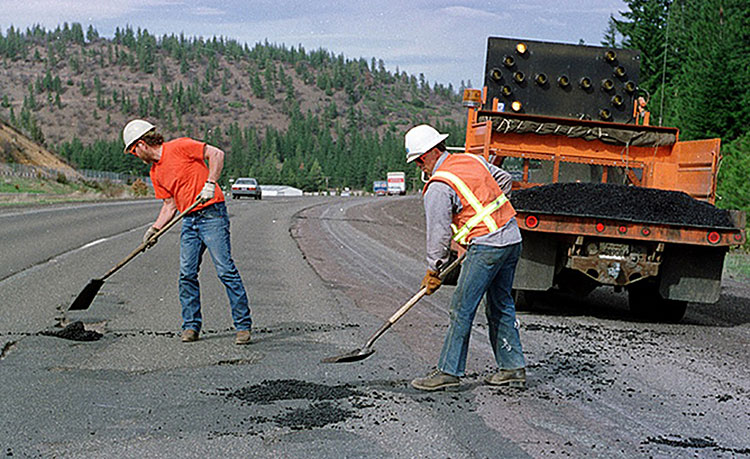By Zach Friend

Proposition 6, which would repeal SB 1, adopted by the legislature to address the nearly $140 billion backlog in statewide deferred road maintenance by raising the gas tax and vehicle registration fees.
Some readers were interested in more information about what would happen if Prop. 6 were approved, had some questions about how the funding is protected for transportation and what local projects are being funded through SB 1 that could be eliminated.
Statewide Impact
Specifically, current projects in the state underway with this funding include over 3,700 road repair projects, 1,500 road and drive safety projects, over 500 bridge and overpass repair and replacement projects, over 300 traffic congestion relief projects, and about 900 pedestrian safety and/or public transportation improvements.
- Can SB 1 funding be used for other purposes such as backfilling the State’s General Fund?
- Put simply, no. In June, California voters passed Prop. 69, which specifically prohibited using SB 1 funds for anything other than transportation improvements.
Local Impact
Locally, SB 1 funding has already been used for storm damage repairs and is expected to provide $115 million countywide over the first ten years for road repairs, bridge and culvert repairs and other safety improvements. Specifically, local projects that are underway (in planning, design or construction) include:
- A pavement preservation project on 26 lane miles of Highway 17 from Scotts Valley to the Santa Clara County line
- Roadway reconstruction and flooding prevention improvements on Branciforte Drive in the City of Santa Cruz
- Replace and upgrade 4 existing culverts along Highway 1 from north of Swanton Road to south of Waddell Creek near Davenport
- Shoulder reconstruction, retaining wall construction, and drainage improvements on Bear Creek Road in Santa Cruz County
- Replace the San Lorenzo River Bridge and the Kings Creek Bridge on Highway 9
- Upgrade traffic monitoring elements on Highway 1 from north of State Park Drive to south of Highway 1/Highway 17 to provide better information on traffic congestion to motorists
- Add up to 9 new Clean Natural Gas (CNG) buses for Santa Cruz METRO
- Repair and resurface damaged roadway and bike lanes • replace damaged sidewalks
- Add pedestrian facilities where none exist on Freedom Boulevard in the City of Watsonville
- Rehabilitate roadway
- Install bike lanes
- Complete accessibility improvements and construct 5 miles of trail in Scotts Valley
- Install LED pedestrian lighting between Water Street and Highway 1 on the San Lorenzo River walk on east and west banks in the City of Santa Cruz
- And much more.
Additionally, with the local passage of Measure D (our local transportation measure) our county now qualifies for funds under SB 1 set aside for communities with local funding measures.
This means we can leverage additional state funds that wouldn’t have been available before Measure D and that won’t be available if Prop. 6 passes. Lastly, any local storm damage sites in our County are obtaining their local match (so construction can begin) through SB1 funds.
What Does it Cost to Maintain SB 1?
According to the California Department of Finance, SB 1 costs motorists an average of $9.76/month based on registration and fuel cost estimates. Here’s their math:
Registration: Nearly 50 percent of all registered vehicles in California are valued at less than $5,000 (transportation improvement fee of $25/year). Forty percent are valued at less than $25,000 ($50/year). In turn, they calculate the average annual additional amount for vehicle registration at approximately $48.
Fuel: California’s 26 million licensed drivers consume 15.5 billion gallons per year. That is 577 gallons per driver, multiplied by 12 cents per gallon is $69.24 each.
The annual cost per driver is: Vehicle Registration $47.85, Fuel $69.24 for a total of $9.76 per month.
What Will it Cost if SB1 is Repealed?
The 2016 California Statewide Local Streets and Roads Needs Assessment Report found that, as roadway pavement conditions deteriorate, the cost to repair them increases exponentially. “For example, it costs as much as fourteen times more to reconstruct a pavement than to preserve it when it is in good condition. Even a modest resurfacing is four times more expensive than maintenance in Best Management Practices (BMP) condition.”
The American Road and Transportation Builders of America studied the positive economic impacts of SB 1, “…an annual savings of nearly $300 per household in California” due to “decreased congestion, less money spent on vehicle repairs, safer roads, and an improved infrastructure network.”
I hope this provides more details on the effects of Prop. 6 and benefits of SB 1 to answer some of the questions you had from the last article.
•••
As always, if I can be of any additional help feel free to call me at 454-2200.